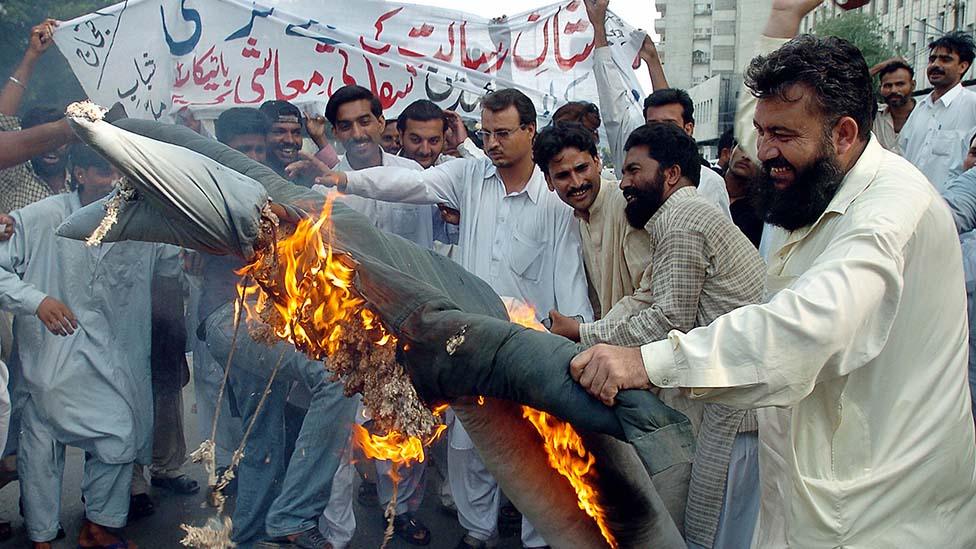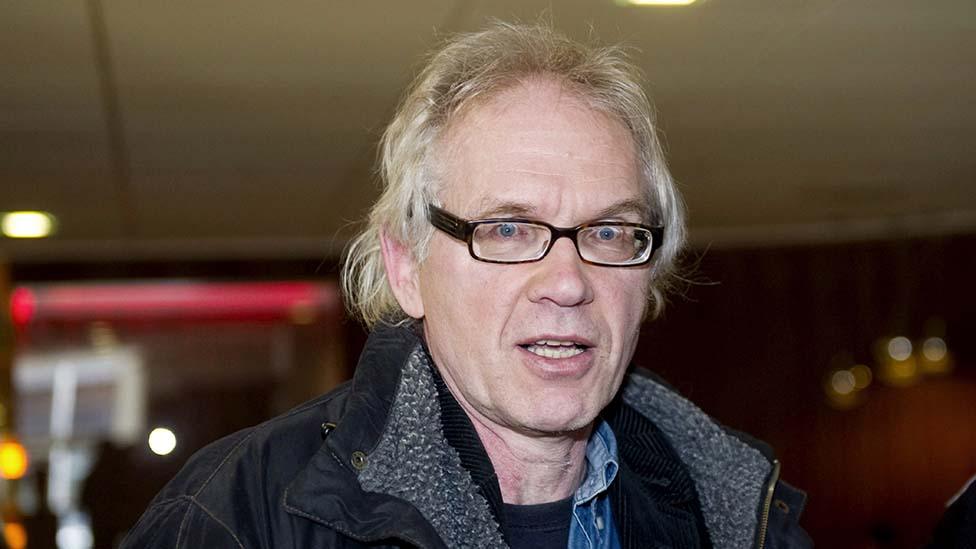Why does depicting the Prophet Muhammad cause offence?
- Published

A Swedish artist living under police protection after drawing a cartoon of the Prophet Muhammad has died in a car accident.
Why does depicting the Prophet Muhammad cause offence?
What does the Koran say?
There is no specific or explicit ban in the Koran, the holy book of Islam, on images of Allah or the Prophet Muhammad - be they carved, painted or drawn.
However, chapter 42, verse 11 of the Koran does say: "[Allah is] the originator of the heavens and the earth... [there is] nothing like a likeness of Him."
This is taken by Muslims to mean that Allah cannot be captured in an image by human hand, such is his beauty and grandeur. To attempt such a thing is seen as an insult to Allah.
The same is believed to apply to Muhammad.
Chapter 21, verses 52-54 of the Koran reads: "[Abraham] said to his father and his people: 'What are these images to whose worship you cleave?' They said: 'We found our fathers worshipping them.' He said: 'Certainly you have been, you and your fathers, in manifest error.'"
From this arises the Muslim belief that images can give rise to idolatry - that is to say an image, rather than the divine being it symbolises, can become the object of worship and veneration.
What does Islamic tradition say?
Islamic tradition or Hadiths, the stories of the words and actions of Muhammad and his Companions, prohibits images of Allah, Muhammad and all the major prophets of the Christian and Jewish traditions.
More widely, Islamic tradition has discouraged the figurative depiction of living creatures, especially human beings. Islamic art has therefore tended to be abstract or decorative.
Shia Islamic tradition is far less strict on this ban. Reproductions of images of the Prophet, mainly produced in the 7th Century in Persia, can be found.
What did artist Lars Vilks do?
The Swedish artist sketched the Prophet Muhammad's head on a dog's body. Published in 2007, the cartoon offended many Muslims.
He was the subject of death threats, and al-Qaeda in Iraq offered a $100,000 (£73,692) reward for his murder.
Vilks died, along with two police officers, when their car collided with a lorry. The Swedish police say there is nothing to suggest that anyone else was involved.

Lars Vilks, who has died in a car accident in Sweden
What other images have sparked controversy?
There were widespread protests across the Muslim world in 2005 after the Danish newspaper, Jyllands-Posten, published 12 cartoons showing Muhammad, with an editorial criticising self-censorship.
Many Muslims found the cartoons insulting and an expression of what they saw as a growing European hostility towards - and fear of - Muslims. The portrayal of the Prophet and Muslims in general as terrorists was seen as particularly offensive.
Attacks in France
In 2011, Charlie Hebdo's office in Paris was firebombed after it temporarily renamed itself "Charia Hebdo" - a play on "Sharia", or Islamic law - for an issue and invited the Prophet Muhammad to be "editor in chief".
The next year, the satirical magazine published an issue featuring several cartoons that appeared to depict Muhammad naked, amid a global uproar over the release of an anti-Islam film.
In 2015, Islamist extremists attacked the offices of Charlie Hebdo, killing 12 people - after it published cartoons of the Prophet Muhammad.
In 2020, Samuel Paty, a teacher in Paris, was beheaded after using cartoons of the Prophet Muhammad during a lesson about freedom of speech.
Rallies in support of the teacher were then held across France, where the issue is particularly sensitive because secularism - or laïcité - is central to national identity.
What's happened in the UK?
In March, there were protests outside a school in Batley, West Yorkshire, over the use by a teacher of an image depicting the Prophet Muhammad. The school apologised and the teacher was suspended.
There are no specific national rules in the UK about using images of the Prophet Muhammad.
Guidance in England from the Department for Education says religious education should provoke questions about beliefs, and also teach pupils to "develop respect for… people with different faiths and beliefs".
Religious education syllabuses are often influenced by local bodies which advise on whether they are suitable for the particular area.
In Kirklees borough, where Batley Grammar School is located, the syllabus says, external children should be "give[n] reasons why visual representation of God and the prophets is forbidden (haram) in Islam," by the end of Key Stage 2.
Pupils should also understand "key religious values including democracy, human rights, rule of law, secularism, freedom of expression and tolerance" - this is taught in Key Stage 3.